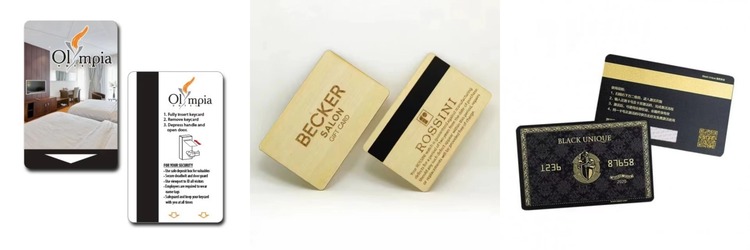Essas pulseiras RFID foram um verdadeiro sucesso no nosso festival! 30.000 pessoas foram escaneadas para entrar e sair em menos de duas horas, sem aglomerações ou longas filas. Nossa equipe de segurança descreveu a entrada como "a mais tranquila de todas".
Jamie - Diretor de Eventos @ Sonic Festivals
Cartões com tarja magnética e cartões RFID são usados para sistemas de chaves, mas eles têm algumas diferenças importantes em termos de tecnologia e funcionalidade.●Tecnologia: Os cartões com tarja magnética utilizam uma tarja magnética no verso que contém dados codificados. Esses dados são lidos passando o cartão por um leitor de tarja magnética, que reconhece os padrões magnéticos e recupera as informações. Por outro lado, os cartões RFID (Identificação por Radiofrequência) utilizam tecnologia de frequência para se comunicar sem fio com um leitor de cartão. O cartão RFID contém um microchip e uma antena que transmitem e recebem dados quando próximos ao leitor.● Contato vs. Sem contato: Os cartões com tarja magnética exigem contato físico com o leitor, pois precisam ser passados ou inseridos no leitor. Em contraste, os cartões RFID são sem contato, o que significa que podem ser lidos a uma curta distância (geralmente a poucos centímetros) sem qualquer contato físico. Isso torna os cartões RFID mais práticos e rápidos de usar, pois os usuários precisam apenas tocar ou acenar com o cartão próximo ao leitor para autenticação.●Segurança: Os cartões com tarja magnética têm uma segurança relativamente baixa em comparação com Cartões RFIDOs dados em cartões com tarja magnética podem ser facilmente copiados ou clonados, tornando-os vulneráveis a fraudes e acessos não autorizados. Os cartões RFID, por outro lado, podem oferecer maior segurança por meio de protocolos de criptografia e autenticação. Eles podem ser programados para ter códigos de identificação dinâmicos ou únicos, dificultando a replicação ou o comprometimento das informações do cartão.●Durabilidade e longevidade: Cartões com tarja magnética são suscetíveis ao desgaste devido ao contato físico com o leitor. A tarja magnética pode ficar riscada ou desgastada com o tempo, causando problemas na leitura do cartão. Os cartões RFID, por serem sem contato, têm uma vida útil mais longa, pois não há contato físico. Os chips e antenas RFID são normalmente incorporados ao cartão, proporcionando maior durabilidade e confiabilidade.●Aplicação e Versatilidade: Cartões com tarja magnética são comumente usados em sistemas simples de identificação e controle de acesso. São frequentemente encontrados em sistemas de cartão magnético para entrada de portas, cartões de associados e programas de fidelidade. Os cartões RFID têm uma gama mais ampla de aplicações e podem ser usados em diversos setores, incluindo controle de acesso, sistemas de pagamento, gestão de estoque e rastreamento de ativos.Em resumo, embora tanto os cartões com tarja magnética quanto os cartões RFID sejam usados em sistemas de entrada com chave, os cartões RFID oferecem vantagens como operação sem contato, recursos de segurança aprimorados e maior durabilidade. Esses fatores tornam os cartões RFID uma solução mais versátil e confiável para diversas aplicações. Como um dos primeiros fabricantes de cartões inteligentes na China, nossa expertise reside em serviços altamente profissionais cartão de plástico fabricação, personalização, envio e distribuição. Seja um cartão com tarja magnética ou um cartão RFID, podemos fornecer tudo o que você precisa em um cartão de plástico.






